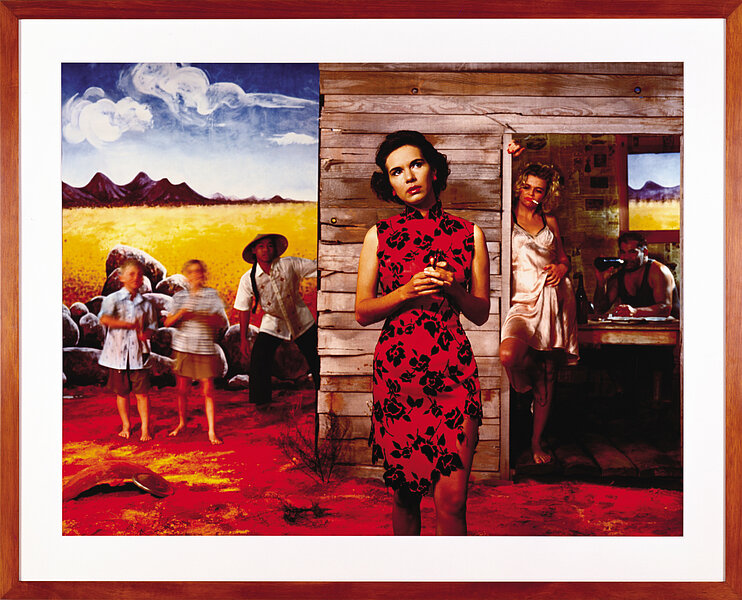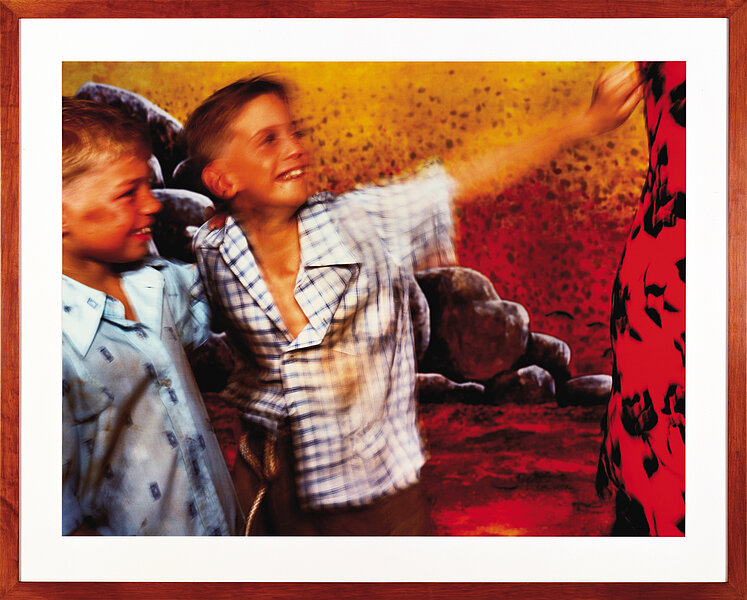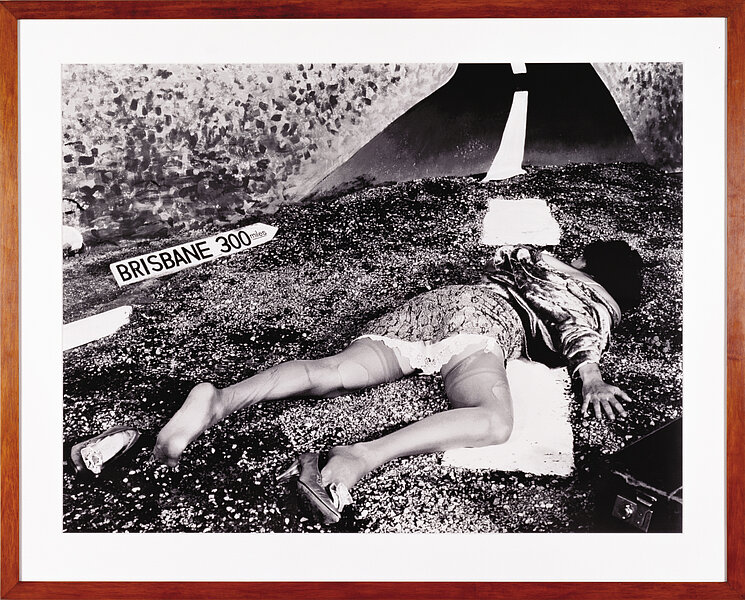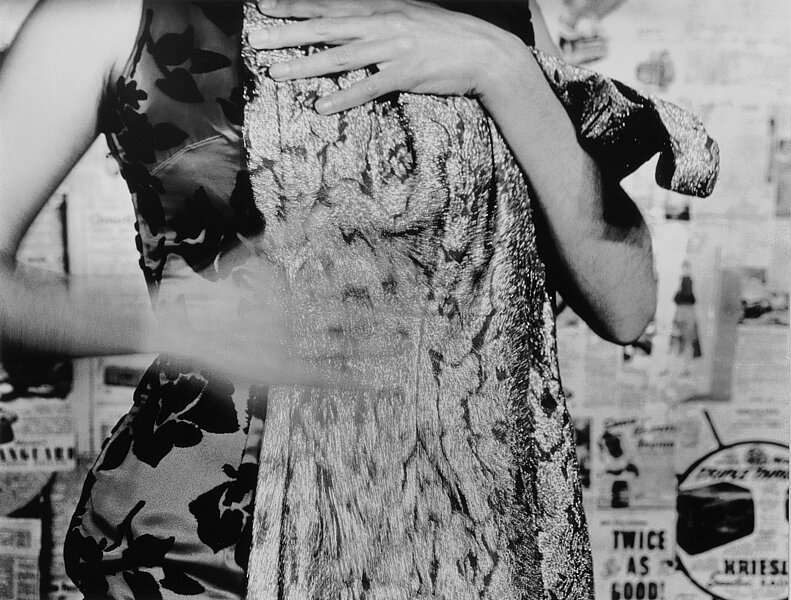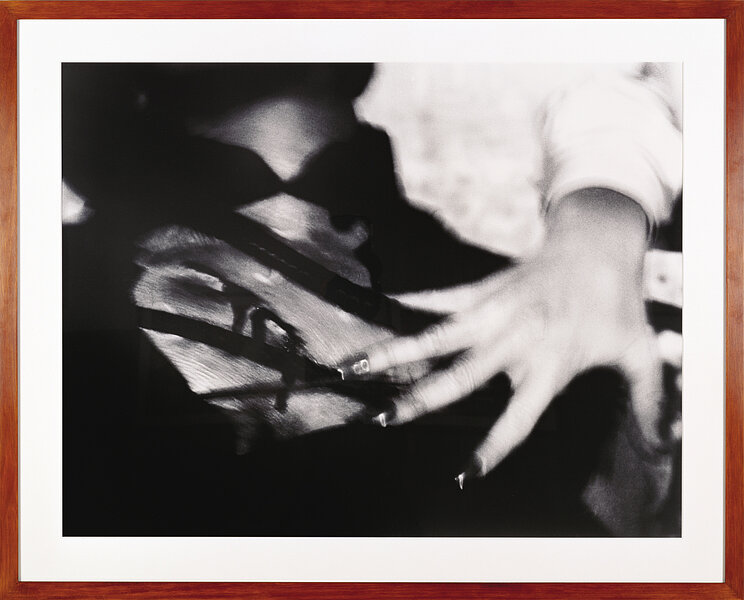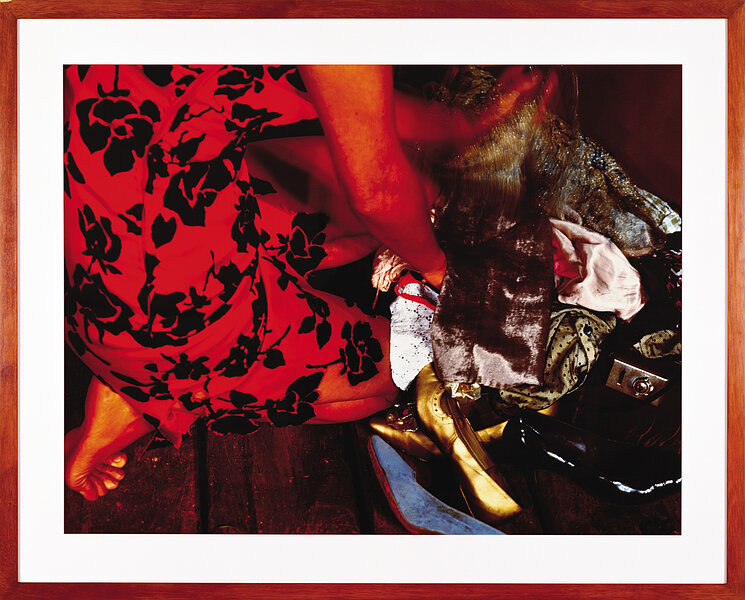
Moffatt, Tracey
Something More
1989
| Object description | 6 Cibachrome and 3 b/w photographs |
|---|---|
| Object category | sculpture |
| Dimensions |
Objektmaß:
height: 97 cm,
width: 127 cm,
height: 123 cm,
width: 152,5 cm,
depth: 2 cm
|
| Year of acquisition | 1999 |
| Inventory number | G 890/0 |
| Creditline | mumok - Museum moderner Kunst Stiftung Ludwig Wien |
| Rights reference | Bildrecht, Wien |
| Further information about the person | Moffatt, Tracey [GND] |
| Literature |
Why picture now/Fotografie, Film, Video, heute Museum moderner Kunst Stiftung Ludwig Wien Die Wohltat der Kunst. Post/Feministische Positionen der neunziger Jahre aus der Sammlung Goetz Just Love Me. Post\Feminist Positions of the 1990s from the Goetz Collection |
“Something More”, a nine-part series of photographs by the Australian photo-artist and filmmaker Tracey Moffatt, born in 1960, brought her international fame in 1989. The series is based on a rather banal story of a young woman from humble background played by Tracy Moffatt herself who dreams of a better life and heads to the big city and there experiences failure. Personal elements like Moffatt’s Aborigine origins and her childhood in a white working class family in Brisbane combine with local and universal human themes such as desire, sexuality, and violence. There are echoes of elements from theatre, film, and television, from Westerns and Hollywood melodramas. What is so special about Moffatt’s black and white and colour photographs is that they deliberately display an abundance of mass media clichés. One feels reminded of the artificially rendered images of some Hollywood films, television, comics and the advertising industry. Despite the rich associative potential and the high recognisability of the photographs the story they pretend to tell never becomes quite tangible. Details and fussy definitions defy an unambiguous interpretation. The story remains sketchy and uncertain. The photos seem likes stills out of a lost Hollywood film whose title we a have forgotten and whose storyline we cannot quite reconstruct. It is this floating ambiguity which makes Moffatt’s photos the projections for our own stories and memories. We are encouraged to take up the role of the storyteller ourselves.
© mumok – museum moderner kunst stiftung ludwig wien

